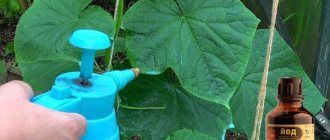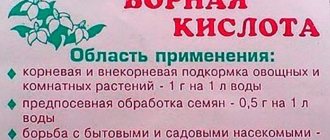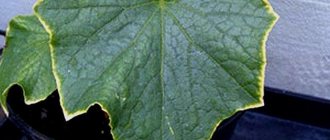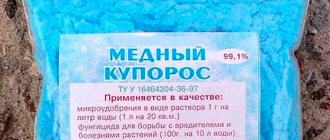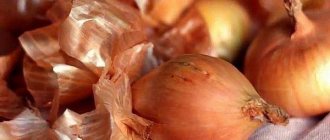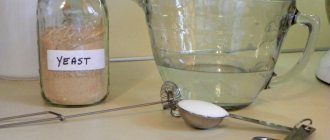How to prepare the solution?
To obtain a nutrient solution, use a product purchased in a store or obtained at home by fermenting milk.
A basic solution for watering at the root is prepared from 1 liter of whey and 10 liters of water heated to 23-25°C. For foliar treatment, dilute with water 1:3. To enhance the effect of whey feeding, a small amount of iodine or wood ash is often added to the base solution.
Domestic breeders have developed a special solution that helps quickly saturate the soil with useful substances and improve its structure. For a 200-liter barrel you will need:
- fermented sugar and yeast - 3 l (prepared from 100 g of sugar and a small piece of live yeast for 3 days);
- bird droppings - 1/2 bucket;
- compost - 1 bucket;
- sand – 2.5-3 kg;
- ash – 1-1.5 kg;
- turf soil – 3-4 kg;
- whey – 1 l.
The components are placed in a barrel, mixed, water is added, preferably rain or lake water, to the brim and kept in the shade for a week. Apply it to the soil, after diluting it with an equal amount of water.
Experienced summer residents recommend a different recipe. Prepare the nutrient mixture in a non-metallic barrel. For 200 l take:
- yeast bread crumb – 400-500 g;
- jam (any kind, candied or fermented) – 3 l;
- cow or horse manure, or bird droppings - half a bucket;
- garden soil - half a bucket;
- chopped grass, straw or leaves - 1 bucket;
- whey – 1 l.
The mixture is placed in a barrel, water is added, mixed, and left for one and a half weeks to ferment under a canopy. The solution is used for root and foliar feeding, having previously diluted it with water in a ratio of 1:4.
In what cases is it used?
Cucumbers after transplanting to the root can be fertilized only after 10-14 days. Until this time, the roots do not absorb nutrients. In bad weather, seedlings can be fed with whey diluted with water and iodine.
An epidemic of powdery mildew may break out in the garden after a sudden cold spell. To prevent it, the bushes need to be sprayed with the following composition:
- copper sulfate - 1 tsp;
- water - 7 l;
- whey - 3 l.
See also
Benefits, types and use of potassium fertilizers for cucumbers, how to feed them
Read
The use of this composition protects cucumbers from powdery mildew. It is recommended to include it in August treatments to prolong fruiting. It is recommended to reduce watering to a minimum and treat the bushes with a warm (25 °C) azophos solution if a white coating does appear on the leaves.
Preparation of the solution
Tomatoes also respond well to feeding with whey based on fermented milk products. The most basic solution recipe is to pour a liter of product into 10 liters of water. You can water it not only on tomatoes and cucumbers, but also on squash and zucchini.
For foliar fertilizer purposes, the infusion is prepared in a ratio of 1:3. As with cucumbers, you should take a break of 10-12 days between treatments.
The whey infusion can be modified by adding, for example, nettle (however, other weeds are also used). It is prepared in a large container (you can also use a barrel, it all depends on the area being processed).
Nettle shoots are crushed and ground, all the grass needs to be filled with water at a temperature of 20-25 degrees, then the composition is mixed with whey (3 liters is enough). The barrel (or any other container) is closed and moved to the shade, where the mixture will ferment for two weeks.
The resulting infusion is diluted with water in a ratio of 1:10, then root watering is carried out.
Features of use in a greenhouse
In greenhouse conditions, the serum should be used carefully, taking into account increased humidity, temperature and ventilation.
Main rules:
- solution temperature 19-20C°;
- the concentration is 2 times weaker than when used on beds;
- carry out the procedure in the morning or evening;
- pre-moisten the soil with clean water so as not to burn the root and prevent acidification;
- Ventilate the greenhouse during operation.
In greenhouses, whey is used for the same purposes as in open space - for growth, against pests and for protection against diseases. Seedlings need to be watered once every 2 weeks. Apply fertilizing not only under the root itself, but also at a distance of 30 cm.
Using whey in the garden
Whey is a secondary product obtained during milk processing. It consists of 93% water, the rest comes from substances contained in milk.
Whey is a useful fertilizer for many garden crops. Most often it is used to feed cucumbers and tomatoes. Both store-bought and homemade products from kefir or sour milk are effective.
The serum can be used in open beds, in greenhouses and hotbeds. The product is suitable for treating young and mature plants.
What are the benefits of fertilizing with an acidic environment?
The serum contains:
- lactose;
- proteins;
- mineral elements;
- amino acids;
- vitamins.
In the garden, this product is highly valued for its content of important amino acids, which are involved in plant growth along with nitrogen, phosphorus and potassium. Lactose protects against pests, monacid bacteria stop the proliferation of pathogens, and the microflora of the product cleans the surface of the leaves from fungi.
Lactic acid inhibits pathogens and promotes greater adhesion of the solution to the leaves. The thin film that forms on the plant protects against the penetration of pathogens and pests.
Can whey be used as a fertilizer?
The serum is used both for application to the soil and for foliar treatment. The product saturates plants with useful elements necessary for growth, improves their condition, which helps to increase productivity.
What happens if you feed plants with whey?
Watch this video on YouTube
Can whey be used as a fertilizer?
Caring for cucumbers includes, in addition to abundant watering, the application of fertilizers. For the rapid growth of vegetables and obtaining a high yield of greens, amino acids, calcium, phosphorus, and copper are needed. All useful elements for cucumbers are contained in sufficient quantities in whey, which can be enriched with iodine and wood ash.
It is recommended to use the serum to feed cucumber seedlings. It is better to water young seedlings when two or three true leaves appear on them. Having received the microelements and amino acids necessary for active growth, the seedlings will not stretch, but will become strong and healthy.
The serum is also used for root and foliar feeding of cucumbers in greenhouses and in open ground. But we must not forget that the acidity of the soil will increase. Therefore, it is imperative to dilute the whey before processing cucumbers.
Ways to use fertilizer
In the garden, fertilizer is applied at the root, diluting the whey in water at a temperature of at least 23 degrees Celsius. It is better to water cucumbers within a radius of half a meter from the main stem. If the acidity of the soil in the garden bed is slightly higher than normal, it may still rise. But this is harmful for cucumbers, so after some time, water the soil with milk of lime diluted in water.
See also
Scheme of formation and cultivation of cucumbers on a trellis in open groundRead
You can also fertilize with whey liquid using the foliar method. For spraying, take a ten percent solution of a dairy product. The diluted whey is beneficial and will not burn the cucumber leaves. You need to know how to spray plants and when to do it.
Choose calm, preferably cloudy, weather for processing. To ensure that the fertilizer adheres well to the leaves, add a little laundry soap in the form of shavings to the nutrient solution. It is necessary to leave the fertilizer for three to four hours for the soap to dissolve. After mixing, begin spraying the cucumber seedlings.
You can pour the whey solution over the compost, then it will ripen quickly and be enriched with useful microelements.
Recipes for solutions
After planting in a permanent place, cucumber seedlings can be fertilized with chemicals no earlier than two weeks later. Before this, the roots must take root and strengthen in the soil - they are not yet able to absorb nutrients. During this period, organic feeding with diluted whey with iodine will help. The best results are obtained with whey not from store-bought milk, but from homemade milk.
For feeding cucumbers
There are many recipes for feeding with iodine-whey solution, the main thing is to observe the proportions of the substances added, choose the right time and method of processing.
With sharp fluctuations in day and night temperatures, cucumber leaves begin to turn yellow. In this case, a folk recipe will help:
- 1 liter of whey;
- 10 liters of water;
- 2 tbsp. l. grated laundry soap;
- 20 drops of iodine.
The resulting mixture is sprayed onto cucumber bushes.
To increase green mass, once every 15 days, water the roots with the following composition:
- water - 5 l;
- iodine - 15 drops;
- whey - 500 ml.
To enhance the nutritional properties of the whey, other components are added to it:
- Bird droppings are mixed with wood ash in a bucket, and 1 liter of serum is poured in. 200 g of yeast are diluted in warm water with 1 tbsp. l. sugar is added to the whey mixture. Infuse the mixture for one week. Before feeding the crop, 1 liter of the mixture is diluted in 10 liters of water and 10 drops of iodine are added. 0.5 liters of solution is poured under each bush.
- A mixture of whey, iodine and meadow herbs gives good results. The mixture is left to ferment for a week, diluted with water and watered under the root.
- Fertilizing with the use of fermented milk product, iodine, wood ash and honey is of great benefit. For 1 liter of whey take a glass of wood ash, 3 tbsp. l. honey and 10 drops of iodine, leave to brew for 3-4 days. It is good to treat cucumbers with this mixture during the flowering period - fertilizing prevents the ovary from falling off.
Whey and iodine, in combination with other beneficial substances, replenish the missing elements necessary for the development of cucumbers and high-quality fruiting. Adding yeast saturates the soil with magnesium and vitamin B. Bird droppings replenish the soil with nitrogen. Herbal infusion nourishes the soil with trace elements and amino acids. As a result of these fertilizing, cucumbers acquire excellent taste.
To combat diseases and pests
Traps are placed in cucumber beds against caterpillars, aphids, fleas, ticks, flies and other crawling and flying insect pests. Take small but deep containers, jars, and fill them halfway with serum with iodine. The walls and edges of the container are greased with oil.
In the evening, traps are placed between the cucumber beds. The sour smell attracts insects and slugs that feed on cucumber leaves. Pests enter the containers overnight. On the slippery walls of the trap they have no way to get out. In the morning they are destroyed.
At the first signs of late blight, the following composition is used:
- whey - 1 l;
- iodine - 30 drops;
- laundry soap - 20 g;
- water - 10 l.
The resulting composition is sprayed once every 10 days.
When treating powdery mildew, it is better to use curd whey. To do this, prepare the following composition:
- whey - 0.5 l;
- iodine - 5 drops;
- urea - 20 g;
- water - 2 l.
This option is also effective:
- whey - 2 l;
- copper sulfate - 5 g;
- iodine - 10 drops;
- water - 5 l.
How to treat cucumbers from diseases and pests
To spray diseased plants, choose the morning hours, when the dew has already subsided. The day should be calm and not hot. Cucumber bushes are treated with a sprayer. If this is not possible, then a watering can will do. It is better to spray the leaves from above. When pathogenic fungi have already infected parts of the plant, they will die in an acidic whey environment after treatment.
See also
Description of the cucumber variety Emerald Family, features of cultivation and careRead
Preventive measures also include spraying cucumbers with whey and iodine. It is better to carry out the procedures three times a season with a break of seven to ten days. The advantages of this treatment are that vegetable plants can also be sprayed with fruits. There are no harmful substances in the mixture of whey and iodine. Apart from benefits, it will bring nothing to cucumbers or humans.
Traps for insects - aphids, fleas, flies - are prepared by pouring serum into small jars. Both slugs and earwigs, which eat the green leaves of cucumbers, love the sour smell. Insects get into the jars and die, unable to get out. You can lubricate the walls and edges of containers with odorless oil, which will prevent garden pests from escaping the trap.
Video: treatment of tomatoes against late blight
Parents have been saying for years that iodine for tomatoes and cucumbers is very useful. This summer I decided to listen to them and try processing vegetable crops using the proposed method. I prepared a mixture of iodine, whey and water. They advised me to process it every week, but I was lazy and did it much less often. The result is not a single pest on vegetables over the summer!
I bought a summer house and dream of growing some vegetables. Tired of store-bought ones stuffed with drugs. I already know that whey will be useful to protect cucumbers and tomatoes. Neighbors suggested that it can be used without harming the plants. Thanks to the acidic environment, fungal diseases will not multiply. I'll definitely use it.
Olga Vitalievna, 56 years old
I would never have thought that ordinary whey obtained after cottage cheese is so useful. I love drinking it, sometimes I use it as a mask, and only the other day I found out that it is good for vegetables. I am sure that the miracle remedy copes well with diseases, so I will use it against late blight and powdery mildew.
I love my polycarbonate greenhouse: tomatoes, squash, cucumbers, and so on grow great there. Last year, some vegetables fell ill with late blight, so I decided to fight - to take preventive measures
Once every 10 days I spray all the plants with whey, paying special attention to the leaves. I am sure that they are not afraid of any disease
Treatment of cucumbers with whey
In open ground, feeding cucumbers should begin 1.5 weeks after planting the seedlings. It is necessary to alternate root and foliar application of fertilizers every 1-2 weeks.
To water 1 bush of a crop you will need 1000 ml of solution. After feeding, the plant needs to be watered with clean running water to wash away the fertilizer from the cucumber foliage. Stems and leaves must be sprayed every 10 days. But manipulation can be done once a month if the plant is strong. Young seedlings can be processed more often - once every 7 days. The last feeding with a milk fermentation product should be carried out at least 2 weeks before harvest.
Processing in open ground
Gardeners use an effective remedy against vegetable diseases and pests - serum for treating cucumbers. It should be used in the evening or in the morning, while the sun's rays are not yet active. Neglecting this rule can lead to foliage burns.
Attention!
It is impossible to feed the crop during strong winds or precipitation.
If it starts to rain after the procedure, you should repeat it. In addition, spraying the crop after precipitation will protect the plant from late blight.
Before fertilizing, strain the fertilizer. This will help remove particles of cottage cheese and other ingredients. In addition, you should get rid of dried and yellowed leaves. Then spray the lower leaves of the cucumber.
During the growing season and fruit set, you need to prepare fertilizing from:
- whey – 2 liters;
- ash – 1 glass;
- honey – 175 g;
- iodine – 10 drops.
Before using the solution, leave it for 2-3 days.
Greenhouse processing
Before you start fertilizing cucumbers in a greenhouse, you need to remember that the structure has high air temperature and humidity. For this reason, the procedure must be carried out carefully:
- the temperature of the product should not exceed 20 degrees Celsius. Moreover, its concentration should be 50% weaker than for vegetables that grow in open ground;
- Before using the serum, water the soil to avoid burning the roots;
- feed the crop in the evening or morning;
- Ventilate the greenhouse regularly.
The fermented milk product in a closed space is used for the same purpose as for open ground.
Whey as a fungicide: recipes and applications
Whey is often used to treat various fungal diseases - most often powdery mildew and late blight:
- To destroy powdery mildew on cucumbers, zucchini, roses, gooseberries, currants, and strawberries, an iodine-whey preparation is prepared. Pour 1 liter of product into 3 liters of water and add 10 drops of pharmaceutical iodine. Treat affected plants leaf by leaf. Find out also: → instructions for using iodine as a fertilizer to increase productivity + reviews.
- To destroy late blight on tomatoes, ash-iodine whey is prepared. A half-liter jar of ash is filled with 3 liters of water and boiled for 30 minutes. The solution is cooled, filtered, and diluted with clean water 1:1. Add 2 liters of filtered whey and a tablespoon of iodine. Affected plants are treated leaf by leaf.
These remedies are good for small lesions, in the early stages of the disease. Treatment will require several treatments with an interval of 5-7 days.
If the infection continues to spread after spraying with serum, it is better to use a stronger fungicide.
Action of the solution
In summer the weather often gets worse. Cold weather, increased soil and air humidity caused by prolonged rains weaken the immunity of cucumbers and create favorable conditions for the proliferation of pathogens.
The starter microflora of the whey and the acidic environment of the product inhibit the growth of fungi. The microelements included in the composition compensate for the lack of nutrients in the soil. A solution of whey with the addition of iodine and other ingredients is used for the prevention and treatment of powdery mildew on cucumbers and tomatoes.
How to prepare the solution?
There are two basic rules for preparing a folk remedy based on whey.
- Do not expose to prolonged exposure to high temperatures. Prolonged heat treatment destroys valuable bacteria in the whey. Pasteurization also kills these bacteria, leaving only a small part of them. As a result, the pH of the whey becomes acidic, and it will not be possible to use this product on soils with a high level of acidity.
- To prepare the product, use only homemade milk, not boiled or pasteurized. This milk contains microorganisms harmful to human health of the genus Pseudomonas. They contribute to rapid spoilage of milk, but are beneficial for the soil. These rods are specially grown for the production of pharmaceuticals.
Based on these two rules, preparing whey for use in gardening is simpler than preparing it for consumption. The process takes place in several stages:
- take raw homemade milk and keep it at room temperature until it sours;
- filter through gauze, previously folded in several layers;
- the strained liquid is used for plants.
With water
The concentration of the solution may vary and is determined by the purpose of use. For root watering, it is necessary to dilute the serum with water in a ratio of 1: 10. And for leaf treatment, we use a solution with a higher concentration - 1: 3.
With brilliant green
Whey solution with brilliant green is used as a preventive and therapeutic agent. It has shown itself well in the treatment of diseases such as powdery mildew. To prepare the solution, take 1 ml of brilliant green, 0.5 liters of whey, 25 g of urea per liter of water. In one season, three treatments are carried out - before flowering, during the formation of ovaries and after flowering.
With iodine
This recipe is good when you urgently need to save the crop. A simple water solution will not help; iodine must be used. For half a liter of whey, take 10 drops of iodine. The latter dissolves better in a warm substance
It is worth spraying every day, paying special attention to the foliage.
There is no restriction on the age of plants in treatment - both young seedlings and mature plantings can be treated
It is important to remember that the solution must be diluted with water to reduce the concentration
With ash
As a foliar feeding, use a solution of 2 liters of whey, 5 tablespoons of honey, 10 drops of iodine, 200 g of ash. All components are mixed well and left for three days.
With herbs
For cooking you need mowed grass. Take a barrel with a capacity of 50 liters and fill it with grass, adding 5 liters of ash. Fill with serum. Leave the mixture to ferment for three days in a warm place.
Other recipes
Take a liter of curdled milk per 9 liters of water at room temperature, add 5 drops of iodine. Apply several times a month to accelerate the growth and development of the crop.
Other “ingredients” can be used to enhance the nutritional properties of whey. For example, a recipe with sugar and yeast in the composition is good. It will take a week to prepare such a solution. However, it's worth it.
Bird droppings are combined with tree ash in a bucket and a liter of whey is added. Separately, dilute 200 g of yeast in water at room temperature, adding a tablespoon of sugar. The infusion time for the mixture is 7 days. Before use, take a liter of the mixture and dilute it in water in an amount of 10 liters. Lastly, add 10 drops of iodine. To treat one planting you will need approximately 500 ml of the prepared solution.
Another effective recipe with honey. You will need iodine, whey, wood ash, honey. Per liter of whey it takes 200 g of ash, 3 tbsp. spoons of honey, 10 drops of iodine. The prepared mixture is infused for 4 days. Sometimes ammonia is added. It is preferable to process cucumbers at the flowering stage. This feeding is an excellent prevention of ovary fall.
For late blight, you should use the following composition:
- liter of whey;
- iodine – 30 drops;
- laundry soap – 20 g;
- water – 10 l.
As a result of mixing the ingredients presented above, a very powerful composition is obtained, which is treated once every 10 days.
Here is another recipe containing urea:
- serum – 500 ml;
- iodine - 5 drops;
- urea - 20 g;
- water - 2 liters.
The following recipe contains copper sulfate. This substance is often used in gardening. Required:
- whey - 2 liters;
- copper sulfate - 5 g;
- iodine - 10 drops;
- water - 5 liters.
Feeding cucumbers
The whey resulting from the curdling of milk contains a lot of substances useful for cucumbers. It contains a lot of nitrogen, phosphorus, potassium, and amino acids, which are necessary for any vegetable crop. The root system of cucumbers receives all these substances when feeding with whey. Gardeners recommend using the following recipe:
- take 1 liter of whey, mix with 10 liters of water;
- add 10 ml of iodine to the mixture;
- use for feeding several times a month.
It is important not to overdo it with whey and never use it in its pure form for fertilizer. It has an acidic-fatty structure, which can harm the soil - change the acid-base balance. To feed cucumbers, the whey is diluted in a ratio of 1:10. For one adult plant, you can use 1 liter of healing liquid. After fertilizing, you can water the bed with clean water so that there is no nutrient solution left on the leaves - this can cause burns on the plants.
What is useful and how to prepare the solution
Whey contains a large number of useful substances, it contains a lot of lactose, proteins, mineral elements, amino acids and vitamins. They play a big role in the growth and development of garden crops. Without them, plants will be weak and sick, and their fruits will be tasteless. The serum also helps fight various types of pests. She:
- destroys fungi that like to grow on plant leaves;
- helps stop the increase in pathogens.
Lactic bacteria contained in whey accelerate the appearance of humus and the decay of organic residues of other plants. Both the soil and the bushes are enriched with the product, that is, foliar treatment is carried out.
Benefits of watering cucumbers with whey:
- a large number of useful substances;
- ease of preparation;
- availability in stores;
- disease prevention;
- treatment of diseases in the early stages;
- suitable for growth;
- indulgence in pest control;
- can be used for seedlings;
- environmentally friendly product.
Disadvantages of treating cucumbers with whey:
- easy to wash off;
- at large doses it harms plants;
- spoils quickly;
- harms crops in a spoiled form;
- may cause allergies in people with lactose intolerance.
To ensure maximum nutrient content, there are a number of rules when making such fertilizer. You need to take natural milk, which has not yet been boiled or pasteurized; it contains the maximum concentration of nutrients and microorganisms. Keep the milk at a temperature of 20-25°C until it becomes sour. Pass the already acidic product through a filter (ordinary gauze will do).
Important to know! Holding for too long leads to the appearance of pathogenic fungi that have a detrimental effect on the health of plants.
Use the resulting liquid to feed cucumbers in the garden, but not in its pure form:
- To replenish the soil, you need to dissolve it with water in a proportion of 100 ml. product per 1 liter. water. The water temperature should be 20-25°C. The resulting solution is used to cultivate the soil at a distance of 50 cm from the plant.
- To treat the bushes themselves, it is advisable to increase the concentration. Prepare the solution in a proportion of 330 ml. for 1 liter of water.
- To make the solution stick to the bushes, you can add a little laundry soap, crushed in advance.
If stored for more than 48 hours, the solution begins to ferment and can subsequently harm the crops. Cucumbers need to be watered according to the rules.
Using whey and iodine for feeding
This composition can be used to feed vegetable plants. The components of the composition have a positive effect on the growth rate and volume of fruiting. The mixture contains amino acids, potassium and calcium. They are necessary for vegetable seedlings to form inflorescences and ovaries.
It is recommended to water young seedlings at the moment when they have formed 3-4 leaves. It is recommended to water cucumber and tomato seedlings 2-3 times a week. Thanks to lactic acid bacteria, plants begin to develop good immunity.
Such manipulations can be carried out in open and closed ground. We recommend that you first study the acidity of the soil substrate so as not to harm the young roots.
Watering is carried out in the early morning or after the midday heat, when the air temperature is no more than 25 degrees.
Experts advise irrigating the soil substrate at a distance of 45-50 cm from the stem. The fact is that upon contact with soil, lactic acid bacteria increase pH.
For work, it is best to use a solution whose concentration does not exceed 10%. The serum must be properly diluted with running liquid so as not to harm the delicate leaves.
After drying, the soil under the bush must be loosened regularly. In this way, it is possible to normalize oxygen access to the root system.
How to prepare and use a functional solution
Based on the serum, functional solutions are made that can protect against diseases, fertilize the plant and improve its flowering.
Serum with iodine against late blight and powdery mildew
Gardeners use the serum to prevent late blight and repel insects. To do this, add 10 drops of iodine to the working solution. This pharmaceutical drug increases metabolic processes in the plant, enhances the process of nitrogen exchange, stimulates plant growth and protects against fungal pathologies.
To improve the effect, the drug “Fitosporin” is added to the solution - it increases the resistance of tomatoes to diseases and pests, and also prolongs the fruiting period.
The serum is also used to prevent powdery mildew. Cucumber leaves are treated with the following solution: 10 liters of water, 1 liter of whey and 13 drops of iodine. The procedure is carried out once every 2 weeks.
Concentrated solution with iodine
At the first sign of disease, emergency measures will be needed to save the crop. A regular working solution will not be able to cope with the disease. The roots and stems of plants are treated with a concentrated solution: 0.5 liters of whey and 10 drops of iodine.
To prepare the solution, it is better to use slightly warmed whey
Sick plants should be sprayed daily, paying special attention to damaged leaves.
This solution can be used to treat both young seedlings and adult plants. To spray fruits, the concentrate is diluted with water.
Recipe for universal serum for vegetables with ash
Fertilizer recipe: for 10 liters of water you will need 2 liters of whey, 10 drops of iodine and 2 tbsp. l. wood ash. It is better to use settled water. The solution is applied at the root or the tops are sprayed with it.
Medicinal mixture with added greenery
Downy mildew is a dangerous disease that affects cucumbers. The disease can be treated and prevented with the following solution: 1 liter of water, 1 ml of brilliant green, 0.5 liters of whey and 25 g of urea.
Treatment is carried out 3 times a season: before and after flowering, as well as in the first days after the formation of the ovaries.
Fertilizer with honey during flowering
Whey improves flowering of tomatoes and cucumbers. To prepare the solution use: 2 liters of product, 5 tbsp. l. honey, 10 drops of iodine, 1 glass of ash. Mix the ingredients thoroughly and leave to infuse for 2-3 days. The solution is used for foliar treatments, as well as for soaking seeds.
Beneficial properties of fermented milk product
Whey is obtained from whole milk by separating it from the curd. This yellowish liquid consists of 93-94% water and only 6-7% dry matter. The product is not only cheap, but also absolutely safe for cucumber bushes.
The beneficial properties of whey for vegetable crops are endless. Most often it is used in combination with iodine. This solution successfully fights many diseases. But you just need to use the fermented milk product wisely, given that it has high acidity.
As a fertilizer
The whey contains valuable amino acids and microelements such as phosphorus, zinc, nitrogen, calcium, iron, potassium and sulfur. Cucumbers are a heat-loving plant, and with any changes in the environment, their leaves turn yellow, dry out and fall off. The whole bush suffers.
What is the use of serum when processing cucumber bushes:
- prevents the development of rotting;
- stimulates the development of ovaries and growth;
- saturates the plant with amino acids and microelements.
Expert opinion
Stanislav Pavlovich
Gardener with 17 years of experience and our expert
Ask a Question
Reference! The fermented milk product works as an organic fertilizer. Thanks to it, the bushes will be strong and strong.
In pest control
Using a dairy product in its pure form is ineffective, so solutions are prepared on its basis with the addition of iodine, boric acid, ash or various herbs, the smell of which helps repel insects.
Using the serum, which caterpillars, moths and other pests love so much, a trap is prepared. Fermented milk liquid is poured into a pan or jar to a third of its volume and placed overnight in an area where there is an abundance of harmful insects.
In the fight against disease
Fermented milk product has an acidic environment, due to which there is an active fight against pathogenic microorganisms. The acidic environment is aimed at inhibiting fungi and bacteria. Therefore, the serum is used to treat cucumbers for the following diseases:
- late blight;
- root rot;
- powdery mildew.
These diseases are the main enemies of vegetable crops. After treatment, the bushes recover, and the damage disappears without a trace. The serum can be applied at the root to the soil or sprayed on the foliage.
Expert opinion
Stanislav Pavlovich
Gardener with 17 years of experience and our expert
Ask a Question
Often the effect of the product is enhanced by the addition of iodine. This solution creates a protective protein film on each leaf; it prevents spores of pathogenic fungi from germinating in the plant tissue.
Advantages and disadvantages
Whey has its advantages and disadvantages. First, let's talk about the advantages.
- Non-toxic and harmless. The serum is also used during the period of fruit formation, without fear of harming the plantings. Spraying can be carried out almost until the fruit is harvested. Because of this property, no additional protection measures need to be applied.
- The solution is prepared simply and quickly.
- The serum is complete in itself and has a varied composition that allows you to replace all other products. It contains all the necessary macro- and microelements. Each of these elements contributes to the full development of the plant.
- The composition contains acids that create unsuitable conditions for the spread of harmful microflora.
- Treating with serum is also useful for repelling pests. For example, aphids will definitely be afraid of this product.
There are only two minuses.
- After treatment with whey, a very thin film is formed on the surface of the plants. It does not last long and is quickly washed away by precipitation. Therefore, you will have to process it often.
- The serum promotes acidification of the soil, for this reason deoxidation is necessary. The most common acid-reducing agent is ash, known to many. It is enough to add very little to the solution.
How to water and spray
As it became known, serum with iodine can be used both for spraying and watering cucumbers and tomatoes. If you decide to treat the plant against pests, then you need to use a special tool - a sprayer. But you can read here when to spray gooseberries against powdery mildew with topaz.
By using such a solution, the appearance of parasites on the leaves can be prevented. After applying the solution, a thin film forms on the plant. This is achieved due to the fact that the serum contains acidic bacteria. Thus, reliable protection of cucumbers from fungi is created.
The solution is also used for root treatment. But it is worth noting that it is not durable. So it is necessary to water cucumbers regularly. Only frequent watering, judging by reviews of Herman cucumbers, will create reliable protection against pests and at the same time saturate the plants with useful components. It is best to water in the month of July. It is at this time that cucumbers need reliable protection from the attack of parasitic fungi, and also require minerals. But what to do when the tips of cucumber leaves turn yellow, and what fertilizers and fertilizers should be used, you can find out by clicking on this link.
Precautionary measures
The main thing when using whey is not to overdo it with the drink. Otherwise, the acid balance of the soil will be disrupted, which will affect the health of the plants. Using undiluted product may burn roots and leaves.
Attention!
Whey is not harmful to humans, but people with dairy allergies need to be careful.
Even the simplest methods have specific application. Recommendations from gardeners:
- Use warm (23-24 degrees) and settled water for the solution;
- the whey must be fresh, without heat treatment;
- follow the recipe exactly;
- Apply the solution on the day of preparation. Otherwise, pathogens may appear in it.
The milk fermentation product does not harm the plant, so it can be used at any stage of development. It is also not dangerous for beneficial insects.
Reviews
Elena, Penza
I heard more than once that you can treat cucumbers with kefir and iodine, but this method did not inspire confidence. I watched several videos on this topic and decided to try it. In the end, I was surprised - a solution of water, fermented milk product and iodine protected my crop from parasites.
Yana, Kaliningrad
I am a supporter of organics, so I use only traditional methods for processing plants in the garden. I read that you can protect cucumbers from diseases with a serum that is not harmful to plants and beneficial insects. Only I diluted it, because in its pure form the drink changes the acidity of the soil.
The use of milk fermentation product is effective and does not harm cucumbers. You just need to follow the advice of agronomists and strictly observe the proportions when preparing the solution.
